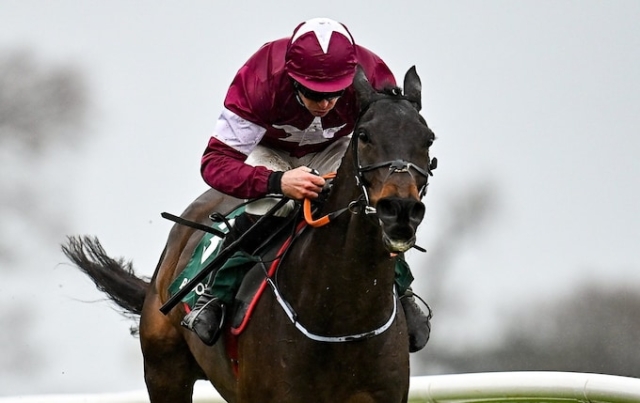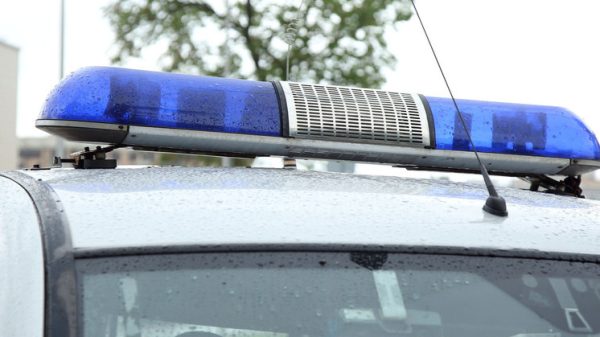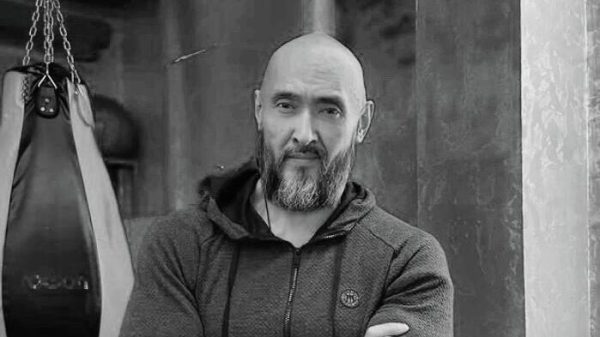 Conflated will have the most weight after the last series of scratches. Photo: Getty Images/Seb Daly
Conflated will have the most weight after the last series of scratches. Photo: Getty Images/Seb Daly
Aintree Festival and the 176th Randox Grand National are almost upon us.
A total of 51 horses are still in contention for the main event, including last year's winner Corach Rambler. For more information, see our comprehensive guide for runners and racers. The next round of scratches will occur at the 48-hour announcement stage on Thursday.
As you prepare for the Grand National, don't miss our top tips. You can also read more about the horse its owner rides, the horse its trainer's wife rides, columnist Charlie Brooks on racing's cocaine problem, and Kitty's Light's trainer on how a horse helped him focus after after his daughter was diagnosed with leukemia.
When is the Aintree Grand National?
The Grand National is the culmination of the three-day Grand National Festival at Aintree, which this year runs from Thursday 11 April to Saturday 13 April.
The main event, the Grand National itself, takes place on Saturday. noon.
What time does the 2024 Grand National start?
Runners will set off at 4pm on Saturday 13 April.
The start time has been moved from 5.15pm following the controversial 2023 race to increase the likelihood of a good result. The Jockey Club said the new start time is part of an «ongoing focus on the welfare of horses».
Where will the 2024 Grand National be held?
The race takes place at Aintree Racecourse, on the outskirts of Liverpool. Since it was first held in 1839, the race has never been officially held anywhere else.
Are Grand National tickets available?
Tickets for each day of the festival are sold on the Jockey Club website. On National Day, seafront prices for adults start from £45. Many other cases are already sold out. The most expensive hospitality package on sale costs £1,225. Parking costs an additional £35 or £60 if you want to park within walking distance of the field.
How many horses compete in the Grand National?
In 2024, the total number of horses in the Grand National was reduced from 40 to 34 to improve the safety of racing. The highest number of runners was 66 in 1929. In 1883, there were also only 10 horses in the race.
When will the horses be announced?
The final 34 horses will be confirmed on Thursday — 48 hours before the race. As of last year, if a horse is withdrawn after these 48-hour applications, that horse will not be replaced.
Initial entries for the race were due by 6 February, with the BHA then publishing the weights (see below) two weeks later on 20 February. The five-day announcements took place on Monday, after which the number of horses was reduced to 51.
Only a certain number of horses meet the criteria for entry into the Grand National. Among the qualifications they must:
- Have an Official Rating (OR) of 130 or more (in 2023 horses must only be rated 125);
- Be aged 7 years or older ;
- Complete three or more steeplechase jumps. ,
- have completed one steeplechase in the current season;
- have finished between 1st and 4th place in a steeplechase over 2 miles 7½ furlongs or further.
- have finished between 1st and 4th place in a steeplechase over 2 miles 7½ furlongs or further.
- li>
What is the race distance?
Traditionally the Grand National is described as a 4½ mile race. However, the official distance is four miles two furlongs and 74 yards (4m 2ft 74). This distance is measured in two yards inside the innermost rail.
The Grand National is the longest long jump race held in the UK.
How long does the Grand National last?
About nine minutes. The distance record — 8 minutes 47.8 seconds — was set by Mr. Frisk in 1990. The jockey of the day, Marcus Armytage, is now a racing correspondent for Telegraph Sport.
How many fences are there in the Grand National?
There are 16 individual fences in the race, 14 of which are jumped twice. There are 30 jumps in total.
The fences are made from Sitka spruce or Norway spruce, which is trucked to Aintree from the Lake District. It takes about three weeks to erect all the fences.
Grand National Track Fences
- Fence 1 and 17— Height 4' 6″ x Width 2' 9″
- Fence 2 & 18 — Height 4' 17″ x Width 3' 6″
- Fence 3 and 19— Open Ditch
- Fence 4 and 20— 5 ft. high, 10 ft. 6 in. wide (includes 7 ft. ditch at takeoff side)
- Fence 5 and 21—height 5 feet, width 3 feet 6 inches
- Fence 6 and 22, Bechers -Brook — height 4' 10″ x width 7' 6″
- Fence 7 and 23, Foinavon – height 4 ft 6 inches, width 3 ft
- Fence 7 and 23, Foinavon – height 4 ft 6 inches, width 3 ft
- < strong> li>
- Fence 8 and 24, Channel Turn — 5 feet high, 7 feet wide
- Fence 9 and 25, Valentine Creek — 5 feet high, 7 feet wide
- Fence 10 and 26— 5 feet high, 3 feet wide
- Fence 11 and 27– height 4 ft 10 in, width 9 ft (including 6 ft ditch on landing side)
- Fence 12 and 28 – height 5 ft, width 8 ft 6 in (incl. 5 ft. 6″ from site side)
- Fence 13&29 — height 4 ft. 7″, width 3 ft.
- Fence 14& 30— Height 4' 6″, Width 3'
- Fence 15Chair — Height 5' 2″, Width 9' (includes 6' moat on the takeoff side). li>
- Fence 16, Dive — height 2ft 6in
Grand National's most famous fences
Aintree fences are not as dangerous as they used to be. However, they still remain the most serious obstacles in business.
Chair (Fence 15): Chair is the tallest fence on the field, currently standing at five feet two inches.
Bechera stream (fence 6 and 22):The sixth and 22nd fences in the race may not be the biggest, but their difficulty comes from the fact that the landing side is 10 inches lower than the takeoff side. Named after Captain Martin Becher, a jockey who fell at this stage during the first race in 1839 and hid in a creek to avoid injury.
St. Valentine's Creek (fence 9 and 25):Named after the horse that supposedly jumped over it backwards in 1840. Most likely, the horse was spinning in the air, creating an optical effect. the illusion that his hind legs landed first.
Foinavon (fence 7 and 23):One of the smaller fences is named after Rifleman 100/1, who escaped a disastrous crowd here in 1967 to victory.
Channel Turn (Fences 8 and 24): As the name suggests, horses must turn sharply to the left after clearing this five-foot obstacle. Another Aintree myth is that used horses that refused to turn ended up in the Liverpool and Leeds Canal.
Grand National Prize
The total prize fund for the Grand National is £1 million. In 2023, prize money was awarded to the first ten horses to pass as follows:
How does the handicapping system work?
The idea behind the handicapping process is that less popular horses can compete against better hunters. To achieve this, the best horses are asked to carry extra weight. The exact weight is determined by a handicapper appointed by the British Horseracing Authority.
The minimum weight a horse (including jockey) is allowed to carry is 10 pounds weighing 2 pounds. The highest-weight horse in the race will carry the 11th weight of 12 pounds, and all other handicap weights are calculated from this weight based on each horse's rating. Last year's winner, Corach Rambler, carried just 10 pounds, weighing 5 pounds.
Many Clouds won in 2015 with a 9-ounce weight of 11, the heaviest weight carried by a winner in recent history. The last horse to win with maximum weight was Red Ram in 1973, when the maximum handicap was set at 12th.
What changes were made to the Grand National this year?
Significant changes have been made to the Grand National. for 2024. The changes were made after animal rights protesters ambushed the 2023 event, causing a 15-minute delay. However, the Jockey Club insists that the changes were not a direct response to these protests.
The most significant changes are as follows:
- The field has been reduced from 40 horses to a maximum of 34. Available data shows a correlation between field size and the risk of horses falling.
- The first fence was moved forward to the starting line. , 60 yards to reduce the speed at which horses reach it.
- The start will now be from a standing position on the tape rather than the traditional roll start. This change is also intended to reduce the speed at which horses reach the first hurdle.
- Each horse must have an official rating of at least 130 (not 125) and will be thoroughly checked for jumping errors before entering. Fence 11 has been reduced in height by two inches and will be repaired. drop on the landing side has been reduced.
- Handler no longer leads horses into the distance before racing, but instead they are released at a gallop in front of the stands.
- Starting time moved from 5:15 p.m. to 4:00 p.m.: 00.
'Colin' sees national glory after hell of injury
Caoilinn Quinn, the conditional jockey attached to Gary Moore's yard, will get his first taste of the Grand National at dirt-loving Nassalam after recovering from a broken collarbone at Taunton six weeks ago.
22-year-old Auld finally returns to race after a fall at Plumpton which prevented him from racing at Nassalam in preparation for the Gold Cup.
Quinn, from Downpatrick in Northern Ireland, nicknamed «Colin» by Jamie Moore, is perhaps one of the least experienced and successful jockeys to take part in Saturday's races — indeed, with a normal handicap he would still have qualified for £3 — but three of his 63 winners were at the long distance «Nationals» — Surrey, Sussex and Wales. It was in the latter that he shone on Nassalam Moore when he came home almost alone, 34 lengths behind his nearest rival.
A jockey has other things to do than bond with a horse after the rain. Liverpool will be tough again on Monday and the national course is expected to be described as tough; it can't be too wet for Nassalam.
Northern Ireland jockeys have had a good racing record, with a relatively small field of runners, Richard Dunwoody (twice), Tony Dobbin and AP McCoy having enjoyed success in recent years.
The only possible reason a horse is not fighting for favoritism, given ground conditions, is its weight. He was given £2 more than last year's winner Corach Rambler, which seems like a bit of a travesty.
Don't miss out on these great betting deals — check out our list right here ahead of the Grand National


























































Свежие комментарии